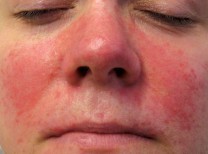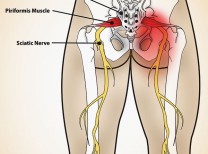Chicken Pox (varicella zoster virus) is a common disease which typically infects children 5 to 10 years of age. The initial infection usually provides a patient with a lifetime of immunity against chickenpox, even with further exposure to the virus. The primary infection persists about 2 weeks and causes eruptions on the face and body accompanied by fever and general malaise.
Outbreaks of this highly contagious virus have significantly reduced since a vaccine was introduced in 1995.
Shingles is the clinical presentation of the varicella zoster virus once it has been re-activated in adulthood. The CDC estimates there are 500,000 to one million cases of shingles reported each year, and even with an adult vaccine, the numbers are increasing. Shingles typically presents as a rash and usually affects only one side of the body. It is often found in the lower thoracic region but may also be located on the scalp, forehead, areas around the eye socket, and even in the eye.
When shingles affects the eye, the trigeminal nerve is typically involved. This nerve has three main branches that involve both motor and sensory of the face. The ophthalmic branch relays sensory information for the scalp, forehead, eyelids, skin around the eye socket, nose, and most importantly, the cornea and conjunctiva.
When shingles occur around the eye area, two thirds of the cases have corneal involvement. All the layers of the cornea can be involved and an inflamed lesion can occur. Over time the lesion heals, but this can take weeks to resolve. In our practice, all patients that have had shingles in the eye area are tested for corneal sensitivity.
These patients are usually at risk for further reactivations of the virus, and the nerves in the inflamed area typically become less sensitive. This is referred to as post herpetic denervation hyposensitivity and can put a patient at risk for neurotrophic keratitis or ulcers, as well as other ocular conditions. When the upper eyelid is involved, scarring can result along with retraction of the lid.
Treatment for shingles includes the use of topical and oral antivirals. Often long-term pain medication is needed for post herpetic neuralgia associated with an outbreak. When the eye is involved initial treatment includes anti-viral medication and often steroids to minimize scarring.
For prevention of shingles in patients over 60, vaccination is an option. Studies have shown that not only does it reduce the incidence in patients that have not had any outbreaks, but it is also effective at reducing the reoccurrence rate in patients that have had outbreaks. If you were under 60 when you first had a vaccination for shingles, you may need a repeat vaccination at approximately the 10-year anniversary. Patients that are immune suppressed or taking immune suppressing drugs are at higher risk of initial and repeat outbreaks.
Dr. Evans is the founding owner of Evans Eye Care in Palm Desert and can be reached at 760.674.8806.















































Comments (0)